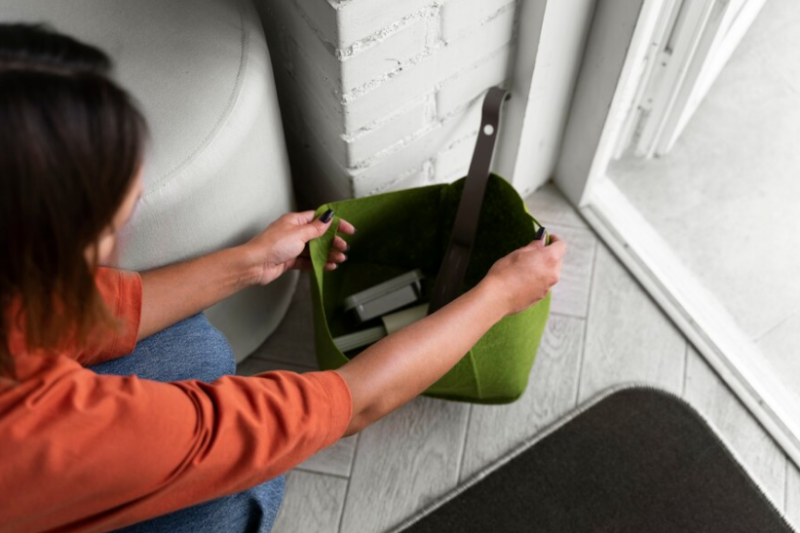Table of Contents
- Leaky Pipes
- Appliance Malfunctions
- Roof Damage
- Poor Drainage
- Natural Disasters
- Preventive Measures
- What to Do Before Help Arrives
- When Professionals Are Needed
Leaky Pipes
Leaky pipes are one of the most frequent reasons for home water damage. Over time, pipes can corrode, crack, or burst, leading to significant water problems. Regular inspections are crucial to catching leaks early, as timely detection can prevent minor issues from becoming major problems. If left unattended, these issues can escalate, causing extensive damage that requires intervention from a Water Damage Restoration Company to remedy the aftermath and prevent further complications. Unexpected spikes in your water bill, wet patches on walls or ceilings, and the sound of running water even when all the taps are off are common indicators of faulty pipes.
Appliance Malfunctions
Appliances such as dishwashers, washing machines, and water heaters can malfunction and cause water damage. Simple maintenance checks can prevent these issues from escalating. Regularly checking for wear and tear, ensuring hoses and connections are secure, and replacing old appliances can go a long way in preventing unexpected leaks and floods within the home. It’s also a good practice to periodically inspect the area around these appliances for any signs of moisture or puddling, which can indicate a slow leak or impending failure. Addressing these issues promptly can save you from more costly repairs and extensive water damage.
Roof Damage
Rainwater intrusion into your house may be possible if your roof is damaged. Regular roof maintenance and inspection can prevent water damage from leaks. This includes checking for missing, damaged, or aging shingles and ensuring that flashing and other roof components are intact. Roof damage is often noticed when significant water damage has occurred, so it’s essential to be proactive. After severe weather events, it’s advisable to inspect your roof for any damage, even if it looks fine from the ground. By doing these things, you can keep your roof intact and stop water from entering your house and causing damage. Here’s a helpful roof inspection checklist to consider, which can guide you through keeping your roof in top condition.
Poor Drainage
Poor yard or gutter drainage can lead to an accumulation of water around the home’s foundation, seeping into basements and crawl spaces. Ensuring proper drainage systems are in place is critical. This includes cleaning gutters regularly, extending downspouts to direct water away from the house, and grading the yard to slope away from the foundation. Poor drainage conditions can often go unnoticed until significant damage has occurred. Regularly walking around your property during or after heavy rain can help identify areas where water pools, which may indicate a drainage issue. These measures can prevent water from pooling around your home, significantly reducing the risk of water damage.
Natural Disasters
Hurricanes, floods, and other natural calamities can result in significant water damage. It’s essential to be prepared and understand your area’s risks. Knowing evacuation routes, having an emergency kit ready, and understanding your flood risk are vital steps. Preparation can help mitigate the damage caused by such events and speed up recovery. The initial response during a natural disaster can significantly affect the extent of water damage to your home. Practicing emergency plans and ensuring your family knows what to do can significantly reduce the chaos and potential damage when disaster strikes. Learn how to prepare for flooding and safeguard your home.
Preventive Measures
The chance of water damage can be considerably decreased by taking preventative action. This includes routine checks of your home’s plumbing, waterproofing your basement, and ensuring your home’s exterior is well-sealed. Regularly inspecting your home’s plumbing for potential leaks, maintaining your roof, and ensuring proper drainage systems are functional is crucial. Additionally, installing water detection devices in areas prone to leaks can provide early warnings and prevent minor issues from becoming major problems. These preventive actions protect your property and contribute to long-term savings by avoiding costly repairs.
What to Do Before Help Arrives
If there is water damage, taking immediate action can reduce the damage. Here’s a checklist of steps you can take before professional help arrives:
- Turn off the water supply to prevent further flooding.
- Take precious things out of the damaged area and place them somewhere secure.
- Use a wet/dry vacuum to remove any standing water if it’s safe.
- Plug in dehumidifiers or fans to start the drying process.
These actions can help mitigate immediate damage and set the stage for professional water damage restoration. Quick action often means the difference between minor and major restoration work. Being prepared and knowing what to do in the initial moments of water damage can significantly reduce the impact and cost of repairs.
When Professionals Are Needed
While some water damage can be handled with DIY solutions, extensive damage often requires professional help. Professionals can ensure proper drying, mold prevention, and structural repairs. They have specialized equipment and expertise to address severe water damage issues effectively. They call professionals critical if you notice large amounts of standing water, structural damage, or mold growth. Professionals can assess the extent of damage, develop a remediation plan, and restore your home to its pre-damage form to guarantee a safe and healthy living environment. In extreme situations, putting off seeking expert help may make the damage worse, requiring more comprehensive repairs at a higher expense.










